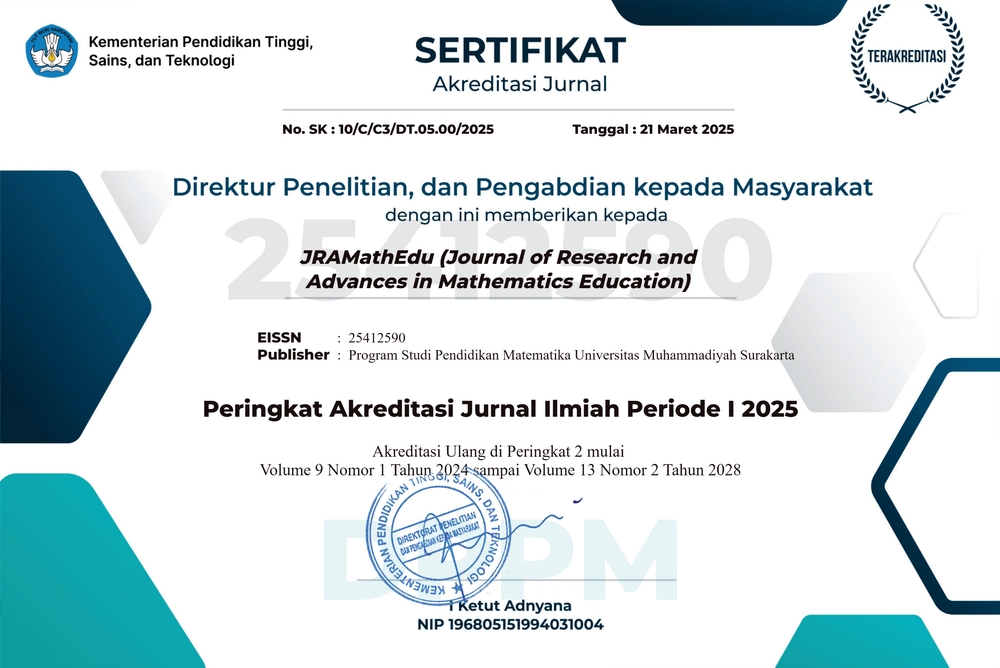Self-efficacy in creativity and curiosity as predicting creative emotions
DOI:
https://doi.org/10.23917/jramathedu.v6i2.12667Keywords:
Self-efficacy, creativity, curiosity, emotions, predictorAbstract
Self-efficacy constructs could predict students’ practices and affect in learning the sciences. Researchers have pointed at such constructs as predictors of students’ mathematics achievement and performance. Selfefficacy was also studied as predictor of emotions in learning mathematics, though little research has done so regarding self-efficacy as predictor of creative emotions. Another predictor of creative emotions could be curiosity. The present study has a regression-based modelling design, where it examined whether a set of constructs of self-efficacy in creativity or/and a set of constructs of curiosity predict significantly creative emotions in mathematical problem solving. Five hundred Grade 8-10 students participated in the study. Data were collected using three self-report questionnaires that measured the research constructs. Data analysis used SPSS 21. Results from multiple regression indicated that the set of constructs of self-efficacy in creativity explained significantly 29.6% of the variance in creative emotions. Moreover, the set of constructs of curiosity explained 17.8% of the variance in creative emotions. Furthermore, three of the five independent variables had best prediction of creative emotions, explaining 32.9% of the variance in creative emotions. The results of the stepwise regression showed that self-efficacy in originality and stretching curiosity were the first two variables in a set of three variables that best explained the variance in creative emotions. The research results lead to the recommendation of developing the previous two constructs in classroom setting to cultivate students’ creative emotions and thus their creative practices.
Submitted
Published
How to Cite
Issue
Section
License

This work is licensed under a Creative Commons Attribution-NonCommercial 4.0 International License.


















